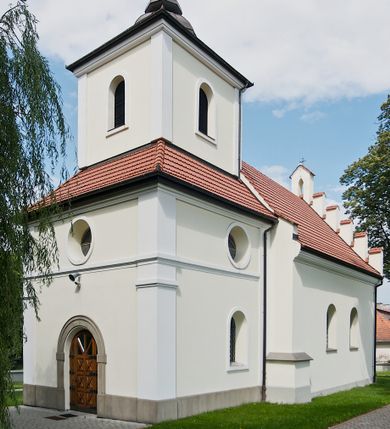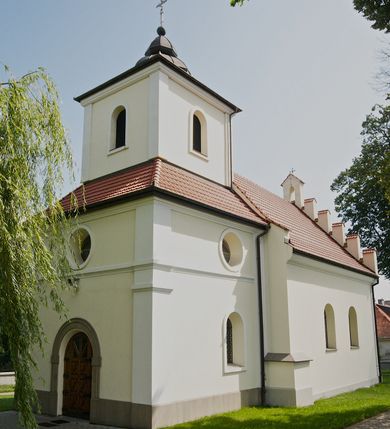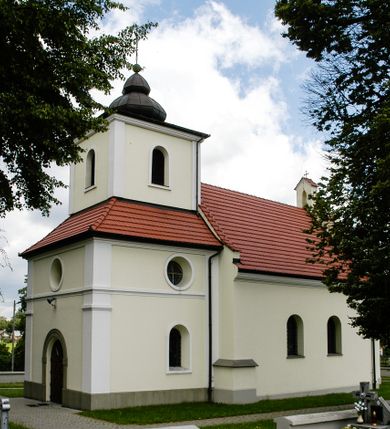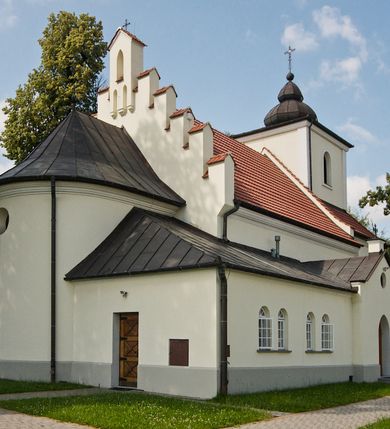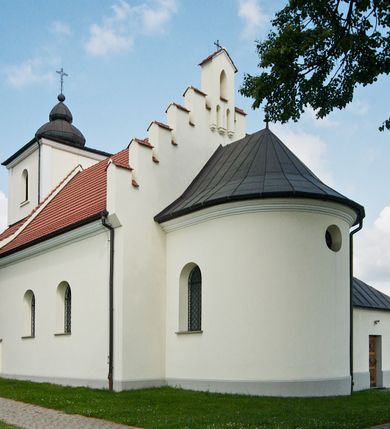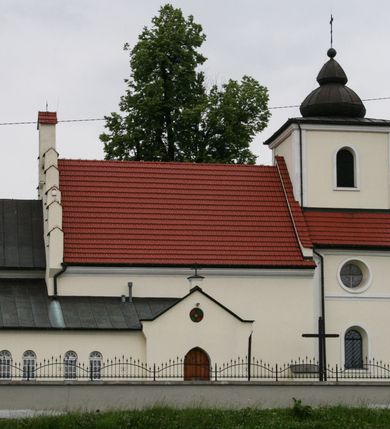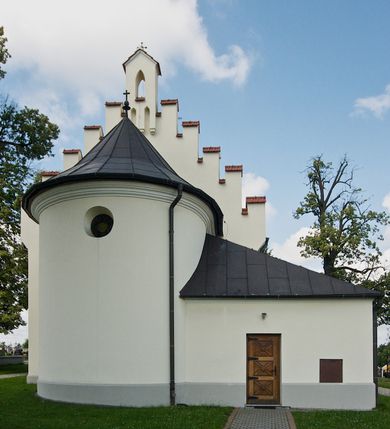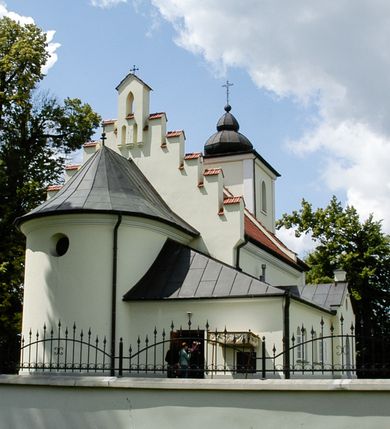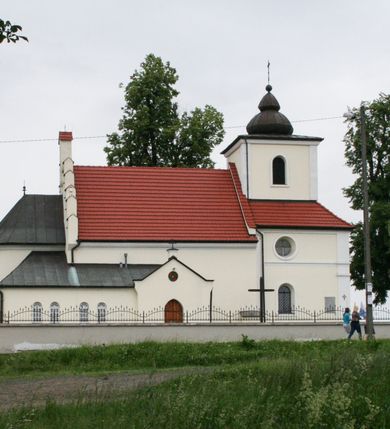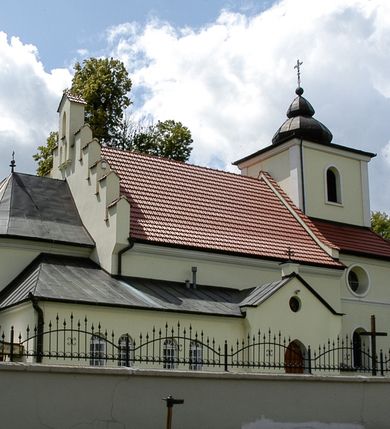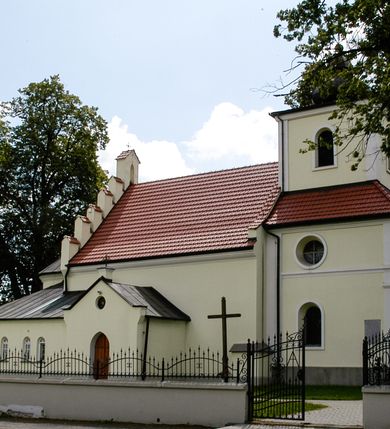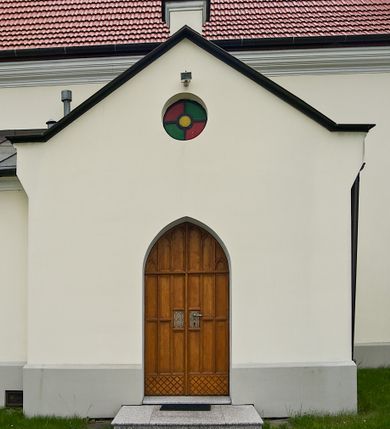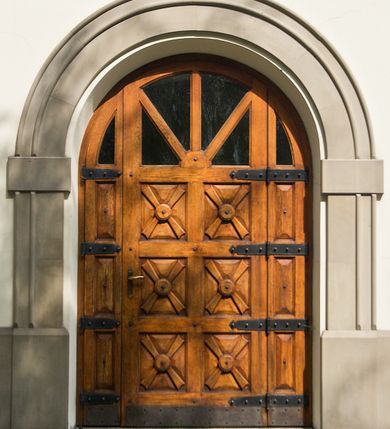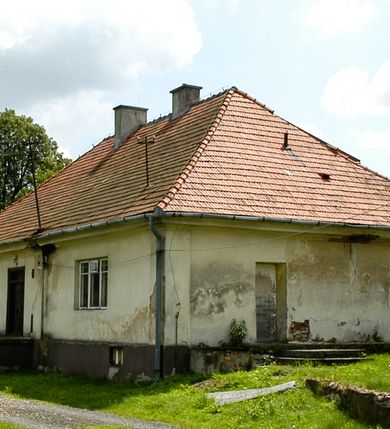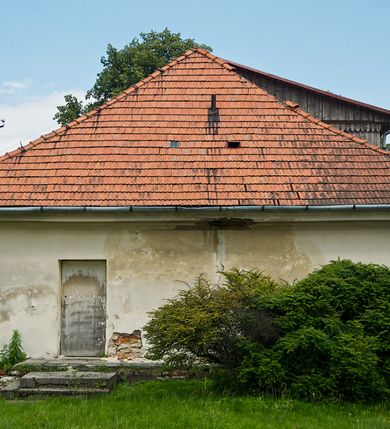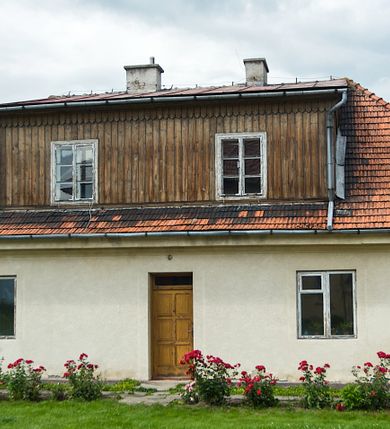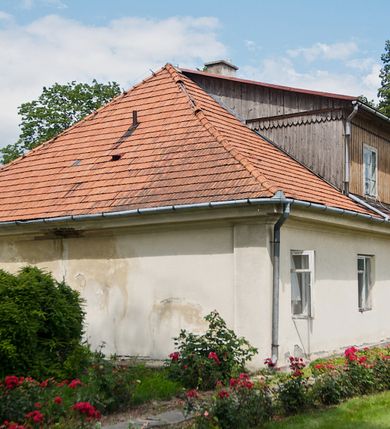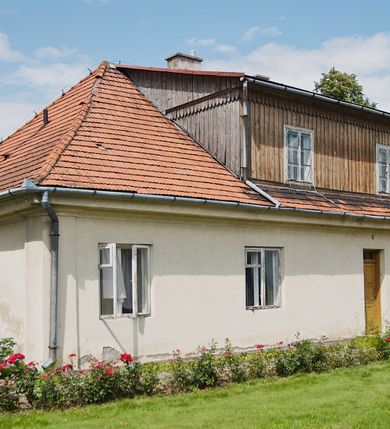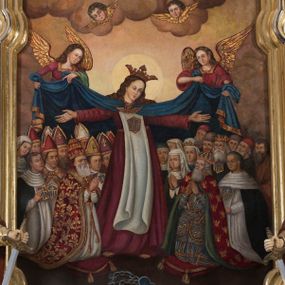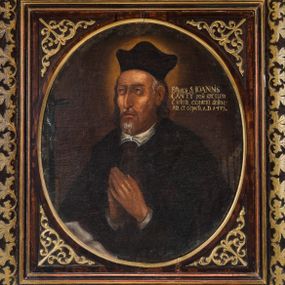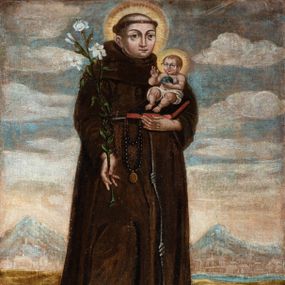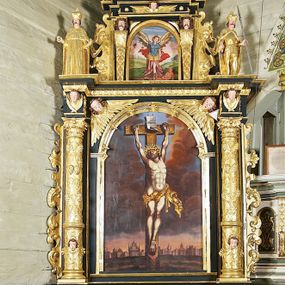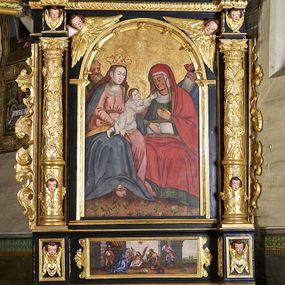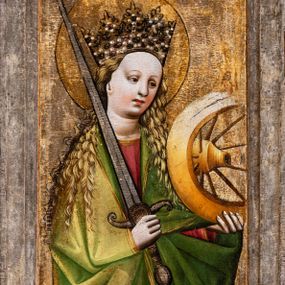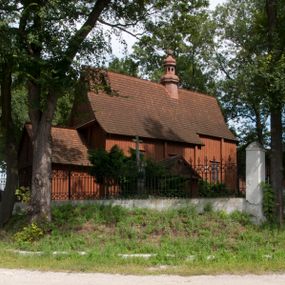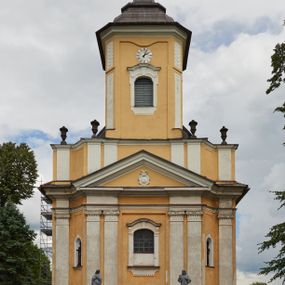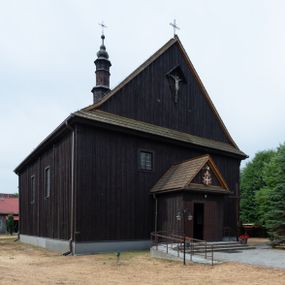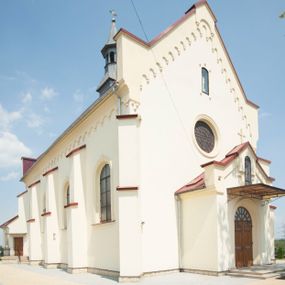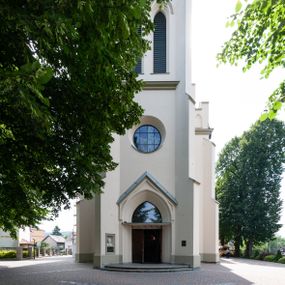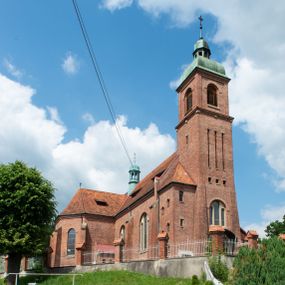
Church of St. James the Apostle in Sanka
Place
Sanka
Parish
Sanka
Identifier
DZIELO/12655
Amount
1
Catalogue note author
Maria Działo
History of work
The first temple in Sanka, founded by the Sosniecki family of the Topór coat of arms was mentioned by Jan Długosz in his work "Liber beneficiorum dioecesis Cracoviensis Cracoviensis". In the 16th century, the temple was owned by Calvinists with the permission of the then village heir Marcin Świerczowski. At that time the inhabitants of Sanka attended the church in Rybna. Świerczowski himself converted at the end of his life and his son Zygmunt started the restoration work of the temple in 1618. On 5 October 1625, Tomasz Oborski – the Bishop of Cracow, solemnly re-consecrated the temple. In the work of 1863, the author Józef Łepkowski noted a stone describing this event with the Kolumna (?) coat of arms and inscription: „Reverendis. in Christo Dnus Thomas Oborski Episc. Laodicensis Sufrag. Cracov. consecravit ecclesiam hanc anno Dni 1625 5 Octobris”. In the second half of the 17th century the furnishings of the church comprised among others: three altars. One of the most valuable monuments of the temple is the image of Our Lady of Sanka, which has been surrounded with cult since the 17th century. The cult developed mostly in the 18th and 19th centuries. In 1846, the miraculous painting was transferred to the high altar and the painting of the patron - St. James the Apostle - to the side altar. In the 19th century, the temple and its surroundings changed their appearance many times. In 1834, the building was enclosed by a stone wall with corner chapels. In turn, a sacristy was added to the temple from the northern side in 1860 and ridge turret in 1866. Apparent barrel vaults were created in 1872 by Szymon Kadłuczka, Wincenty Kowalczyk i Kasper Tatarucha. A wooden tower was built on the axis of the church one year later. The present appearance of the temple is the result of conservation work carried out since 1996. At that time, among others, the coping over the main nave was replaced and the tower of the ridge turret was liquidated. In 1999, a low brick tower was erected. The temple has the 19th-century high altar and two 18th-century side altars. At the left side altar there is a baptismal font, mentioned in sources from 1644. Epitaph plaques of members of the Świerczowscy and Kochańscy families belong to very interesting monuments of the temple in Sanka. These epitaph plaques were made of the famous in the 17th century black marble quarried up in nearby Dębnik. There were also workshops specialising in the processing of raw material, and their products (plaques, altars, baptismal fonts, etc.) decorate many temples nowadays, including such well-known temples as the Wawel Cathedral or Benedictine monasteries in Tyniec and Camaldolese monks in Bielany (district of Cracow). In addition, coffin portraits have preserved from sepulchral art, including the portrait of Zofia Kochańska, which is particularly popular among visitors to the temple, belongs to a special branch of painting – coffin portraits, depicting the realistic image of a deceased person, but shown as alive. The piece was created in the third quarter of the 17th century. It is a part of a seven-piece set of epitaph plaques commemorating the funders of the church from the Świerczowscy and Kochańscy families, buried under the church floor.
Abstract
The Church of St. James the Apostle in Sanka was built from the foundation of Zygmunt Świerczowski in 1618–1625. After a short period of time, on the initiative of then owner of the village, the church was transformed into a Calvinist church. This situation did not last long and concerned only the owners of Sanka. At that time, the faithful attended the temple in Rybna. The owner of the village, however, converted before his death to Catholicism and the church became Catholic again. On October 5, 1625, Tomasz Oborski – the Bishop of Cracow, solemnly re-consecrated the church. In the second half of the 17th century, the church in Sanka was quite well equipped – it had i.a. three altars. In the high altar of the temple there is still the painting depicting Madonna of Sanka, dating back to this period. The cult of the image already existed in the 17th century, as evidenced by panels with votive offerings, placed next to the painting in 1663. In 1846, the Miraculous Image was transferred to the high altar (according to the parish chronicle: "for greater honour") and the main patron – St. Jacob – was transferred to the side altar. According to historical tradition, the reason for transferring the painting was the gift of offspring begged by the village heiress. A woman lost her pregnancies as a result of miscarriage several times. After hearing her prayers at the feet of the Mother of God, she asked the bishop for permission to transfer the painting to the high altar. The image of Madonna of Sanka (created on May 22, 2015) was topped with episcopal crowns. The faithful ask for special favours in front of this painting and offer votive offerings. In the 19th century, the temple and its surroundings changed their appearance many times. In 1834, the building was enclosed by a stone wall with corner chapels. In 1860, a sacristy was added from the northern side, and a nave was covered with an apparent barrel vault. The next change of the building's body took place in 1873, when a wooden tower was erected. Current appearance of the temple is the result of restoration works initiated in 1996. The temple has the 19th-century high altar and two 18th-century side altars. At the left side altar there is a baptismal font, mentioned in sources from 1644. Epitaph plaques of members of the Świerczowscy and Kochańscy families belong to very interesting monuments of the temple in Sanka. These epitaph plaques were made of the famous in the 17th century black marble quarried nearby Dębnik. There were also workshops specialising in the processing of raw material, and their products (plaques, altars, baptismal fonts, etc.) decorate many temples nowadays, including such well-known temples as the Wawel Cathedral or Benedictine monasteries in Tyniec and Camaldolese monks in Bielany (district of Cracow). In addition, coffin portraits have preserved from sepulchral art, including the portrait of Zofia Kochańska, which is particularly popular among visitors to the temple, belongs to a special branch of painting – coffin portraits, depicting the realistic image of a deceased person, but shown as alive. The piece was created in the third quarter of the 17th century. It is a part of a seven-piece set of epitaph plaques commemorating the funders of the church from the Świerczowscy and Kochańscy families, buried under the church floor.
Other works from this place
Other works from this year
Similar works
How to cite?
Maria Działo, "Church of St. James the Apostle in Sanka", [in:] "The Sacred Lesser Poland Heritage", 2026, source: https://sdm.upjp2.edu.pl/en/works/church-of-st-james-the-apostle-in-sanka
